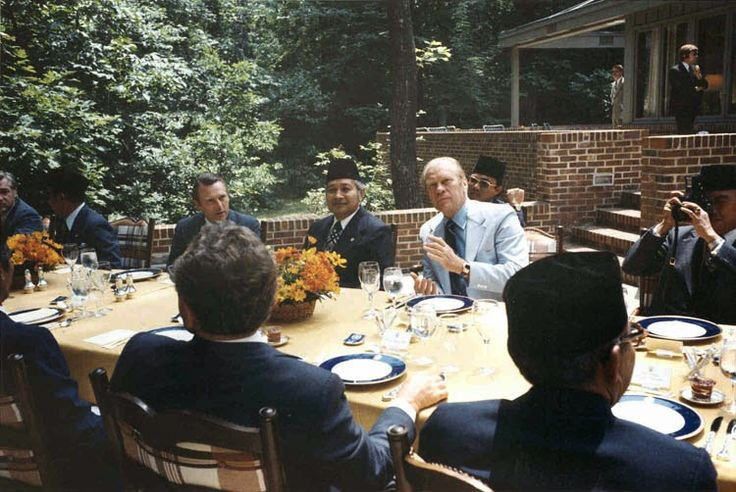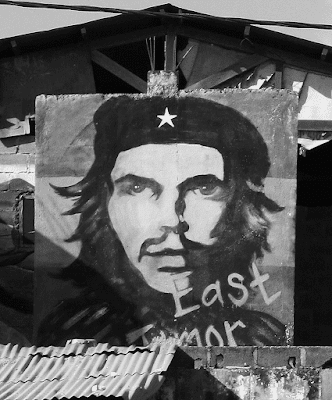When we talk about genocides, we mostly talk about the Rwandan, Cambodian, or Bosnian genocide. But the case of Timor-Leste is lost and forgotten. One of the horrific crimes of the 20th century happened in Timor-Leste by the dictator Suharto and the Indonesian occupation of the small island country of Timor-Leste.
Buried in the Cold War archives, the East Timor Massacre's blood-soaked chapter rarely makes it to global headlines. This is a tragic tale of colonial hangovers, military occupation, and shameless complicity by Western powers.
A Colonial Legacy: From Portugal to Indonesia —
The island of Timor was divided into two parts in the 16th century. Portugal took the eastern part, while the Dutch took the western part. After Indonesia gained independence from the Netherlands in 1949, the western part became a part of Indonesia, while the eastern part remained a neglected Portuguese colony till 1975. East Timor declared its independence on November 28, 1975, but it didn’t last long.
Indonesian dictator Suharto viewed the Timorese political party Fretilin’s leftist ideology as a threat. On December 7, 1975, after U.S. President Gerald Ford and Secretary of State Henry Kissinger departed Jakarta, Indonesian forces led by Suharto launched Operation Seroja and invaded East Timor for its strategic location and resources, framing the invasion as a move to prevent communist infiltration in the region. This occurred just nine days after the country had gained freedom from over 273 years of Portuguese occupation (1702–1975).
 |
| Indonesian dictator Suharto and Gerald Ford |
Suharto’s Genocidal Policies —
What follows next was nothing short of a genocidal campaign. Indonesia started systematically destroying Timorese culture, killing people and starving them to death.
 |
| Indonesian dictator Suharto |
Forced Starvation — Indonesian forces destroyed crops and livestock, displacing 320,000–370,000 people into militarised camps. As per the UN estimate, it killed 150,000–180,000 people from starvation and disease.
Sexual violence and torture— women were considered as “the weapon of war” . Rape and sexual slavery were widespread.
Operation Keanamann— After Indonesia invaded East Timor in December 1975, the Suharto regime launched a series of so-called “Keamanan” (Security) operations to suppress resistance movements — primarily targeting the guerrilla fighters of FALINTIL and any suspected sympathisers among the civilian population. The term “Operation Keamanan” was used repeatedly for various military crackdowns over the years, essentially acting as a blanket justification for mass killings, forced relocations, torture, and village burnings in the name of maintaining “internal security”.
 |
The role of US, UK & Australia —
Western powers, especially the so-called champions of freedom and liberty, the USA, played a crucial role in enabling the genocide.
The U.S.A. — The US of A provided 90% of the military equipment to wage a war and genocide against East Timor. Declassified cables reveal Kissinger assured Suharto of “no objections” to the invasion, while the CIA downplayed atrocities. Congressman Donald Fraser later admitted U.S. complicity, noting, “U.S. arms were used in all that”.
Australia — The governments of Malcolm Fraser, Bob Hawke, and Paul Keating cooperated with the Indonesian military and President Suharto to obscure details about conditions in East Timor and to preserve Indonesian control of the region. Motivated by oil and gas reserves in the Timor Sea, Australia collaborated with Jakarta to draft the 1989 Timor Gap Treaty. Exposed files revealed that Australian officials mocked reports of atrocities, with one adding “sounds like fun” beside accounts of rape.
The UK and Japan — British-supplied Hawk jets were used in bombardments, while the UK and Japan, Canada, and Malaysia joined the U.S. in blocking UN resolutions condemning Indonesia.
The contribution of Falintil and the Path to Independence —
 |
| Forças Armadas da Libertação Nacional de Timor-Leste, Falintil |
The struggle for East Timor’s independence was led by two courageous forces — FRETILIN (Revolutionary Front for an Independent East Timor) and its armed wing, FALINTIL (Armed Forces for the National Liberation of East Timor). FALINTIL, under leaders like Xanana Gusmão, Nicolau Lobato (first prime minister of the country), waged a determined guerrilla war against colonial Indonesia. Lobato was the first commander of the armed wing. Despite having limited weapons and supplies, FALINTIL used East Timor’s rugged mountains and support from local communities to sustain their struggle, becoming a powerful symbol of Timorese resistance. They used hit-and-run tactics against Indonesia’s well-equipped military. Despite repeated attempts to crush them, including targeted massacres of their family members, FALINTIL endured. They weren’t just soldiers; they were schoolteachers, farmers, and students turned freedom fighters.
Meanwhile, FRETILIN, a Marxist-Leninist party, became the political voice of the resistance, exposing atrocities and seeking international support. Leaders like Xanana Gusmão (FALINTIL commander) and José Ramos-Horta (FRETILIN diplomat) exposed atrocities at the UN. Though decades of occupation brought massacres, starvation, and forced relocations, the resilience of the East Timorese people never broke. Pressure culminated in a 1999 UN referendum, where 78.5% voted for independence. Indonesian-backed militias retaliated with violence, but FALINTIL restrained retaliation, enabling Australian-led peacekeepers to stabilise the region. Timor-Leste achieved formal independence in 2002, with Gusmão as its first president.
Sadly, Nicolau Lobato was shot and killed by Indonesian forces in 1978, years before his country would finally achieve the freedom he fought for. His body, however, was never found. He is widely considered a national hero today.
 | ||
|
Contribution of the Communist Party of Australia —While the Australian government largely sided with Jakarta for strategic and economic reasons, the Communist Party of Australia (CPA), along with trade unions and student organisations, worked tirelessly to raise awareness about the atrocities in East Timor. Through their newspaper, Tribune, and public campaigns, they exposed massacres, forced starvation, and the role of Western powers. The Australian communists even set up an illegal radio station that broadcast reports from the Timorese resistance to the outside world. Their efforts not only revealed the horrors of the occupation but also exposed Australia’s quiet role in covering them up. |
A History That Demands Remembering —
Today, East Timor remains one of Asia’s poorest nations after 273 years of Portuguese occupation and then 27 years of Indonesian occupation but stands tall as a testament to resilience against imperialism. Mass graves are still being uncovered. The world saw the atrocity, but none of the perpetrators faced trial. The very person who killed the first prime minister of Timor-Leste, Lieutenant Prabowo Subianto, is the current president of Indonesia.
What makes this history especially vital is how disturbingly familiar its patterns remain in our world today. From Israel’s ongoing occupation of Gaza and the West Bank to Azerbaijan’s occupation of Nagorno-Karabakh and Western silence on the Rohingya genocide in Myanmar, modern geopolitics continues to echo the betrayals East Timor once faced. The same justifications that Suharto employed—"anti-terrorism", "internal security", and "sovereignty"—are being recycled by the modern autocrats. The UK, the US, Israel and their same allies are playing the same role.
In remembering East Timor, we remember not just a genocide but a blueprint. And if we fail to confront these patterns today, history will continue to repeat itself, with different names and flags.







Comments
Post a Comment